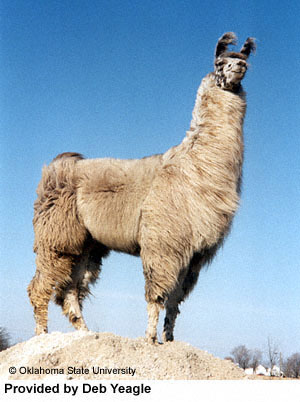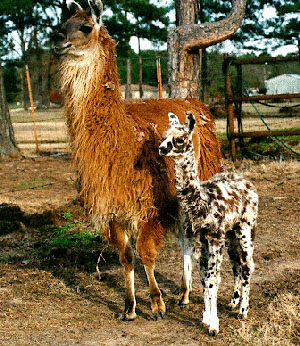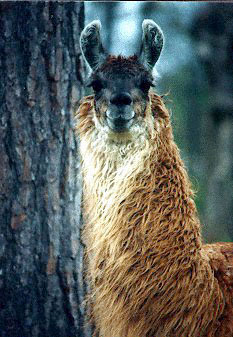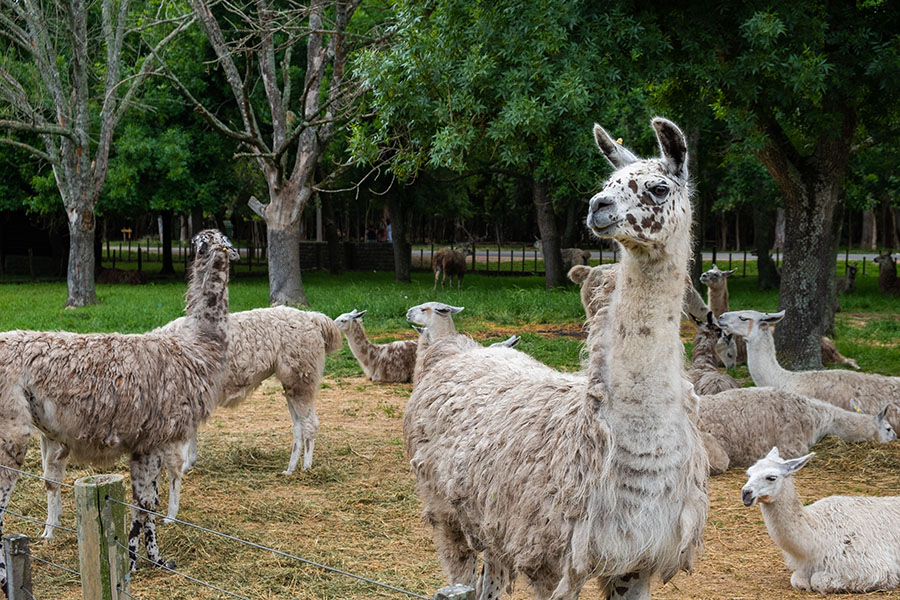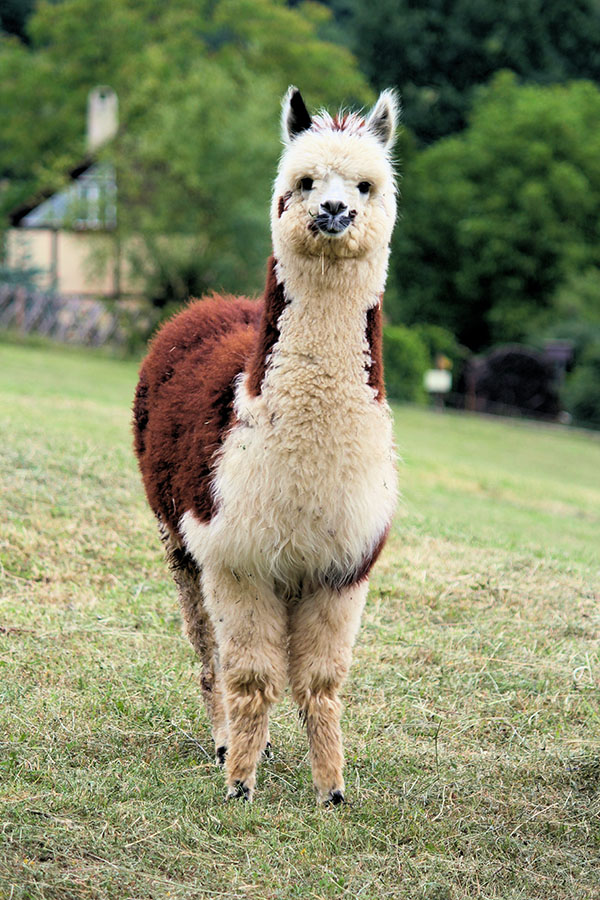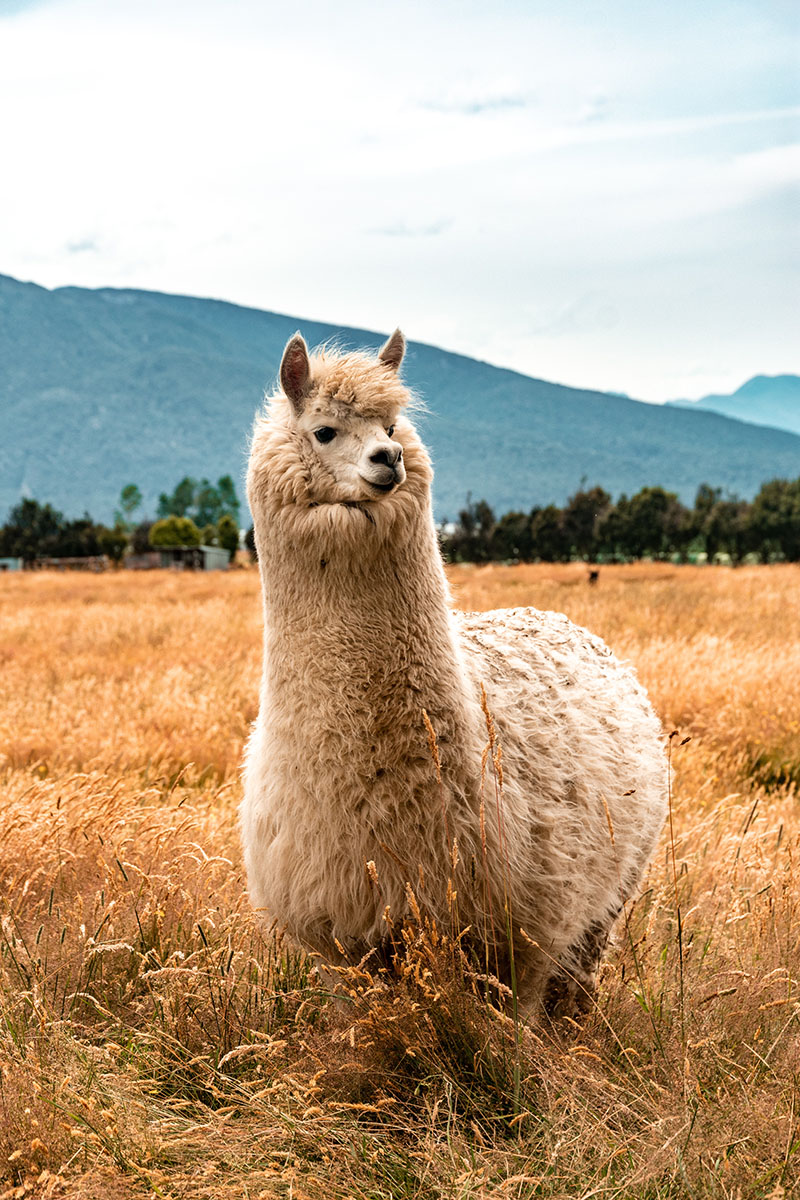Llamas
Llamas are members of the camelid family. The camelids originated on the central plains of North America about 40 million years ago.
From there, about three million years ago, llama-like animals dispersed to South America. By the end of the last ice-age (10,000-12,000 years ago) the camelids were extinct in North America.
Llamas were domesticated from guanacos in the Andean Highlands of Peru 4,000-5,000 years ago, and are among the oldest domestic animals in the world. Primarily a beast of burden, the also provide native herdsmen with meat, fiber for clothing, hides for shelter and manure pellets for fuel.
Frequently Asked Questions
Q: What are they used for?
A: Uses include breeding stock, packing, driving, fiber production, therapy and pets.
Q: Are they intelligent?
A: Llamas are intelligent and easy to train. In just a few repetitions they will pick up and retain many behaviors such as accepting a halter, being led, loading in and out of a vehicle, pulling a cart or carrying a pack.
Q: Can you use their fiber?
A: Grease-free light-weight llama hair is warm, luxurious and very popular with spinners, knitters, weavers and other crafts people.
Q: Are they good pack animals?
A: Many llamas are excellent packers. They often carry 25-30 percent of their body weight for 5-8 miles, but are not ridden except by children. Their two-toed foot with its leathery bottom pad gives them great sure-footedness. This, and their ability to browse, give the llama and impact on the environment equivalent to a large deer.
Q: What and how much do they eat?
A: Llamas are a modified ruminant with a three-compartment stomach. They chew their cud like cattle and sheep. Due to their low protein requirement and efficient digestive system, llamas are economical to keep. Veterinary advice should be sought regarding feed, vitamin and mineral requirements for specific regions.
Q: What is their personality like?
A: These highly social animals need their companionship of their species. Independent yet shy, llamas are gentle and curious. Their calm nature and common sense make them easy for anyone, even children, to handle.
Q: Do they spit?
A: Spitting is the llamas way of saying "Bug OFF!" Normally used among llamas to ward off a perceived threat, discourage annoying suitors or most commonly, to establish pecking order at mealtime, an occasional llama who has been forced to tolerate excessive human handling may have developed an intolerance for, or fear of, humans and will spit if it feels threatened.
Physical Facts
- Life Span: About 15-25 years
- Height: 40-45" at the shoulder, 5'5"-6" at the head.
- Weight: Average Range - 280 to 450 lbs.
- Gestation: 350 days (average)
- Birth: A single baby "cria" is normally delivered standing mother during the daylight. Twins are rare.
- Babies: Birth weights average 20-30 pounds. Crias are normally up and nursing within 90 minutes. They are weaned at about 6 months.
- Reproduction: Females are first bred at 18 to 24 months of age. Llamas do not have a heat cycle, but are induced ovulators (ovulation occurs 24-36 hours after breeding). Thus they can be bred at any time during the year.
- Color: Hair ranges from white to black, with shades of beige, brown, red and roan in between. It may be solid, spotted or marked in a variety of patterns.
- Health: Because llamas and their ancestors are specially suited to the harsh environment of their Andrean homeland, North American owners will find them hardy, healthy, easy to care for and remarkably disease-free.
Registries and Breed Associations
International Llama Association
2755 S. Locust St., #114
Denver, CO 80222
Phone: (303) 756-9004
Fax: (303) 756-8794
e-mail: intlllama@aol.com
P.O. Box 8
Kalispell, MT 59903
Phone: (406) 755-3438
Fax: (406) 755-3439
e-mail: ilr@digisys.net
References
Janice Murphy, Wamba Llamas, Texarkana, TX

